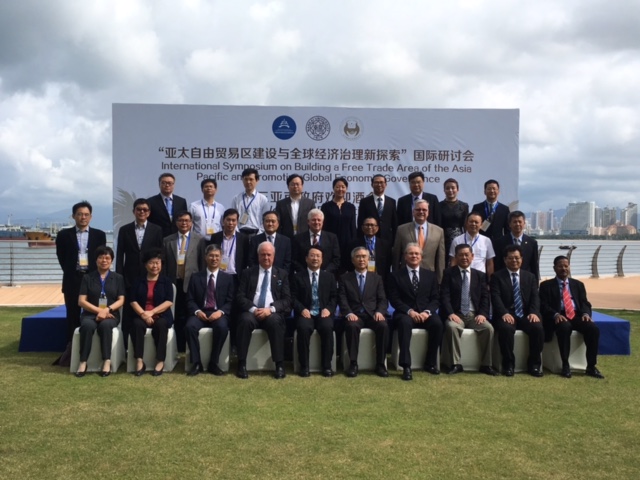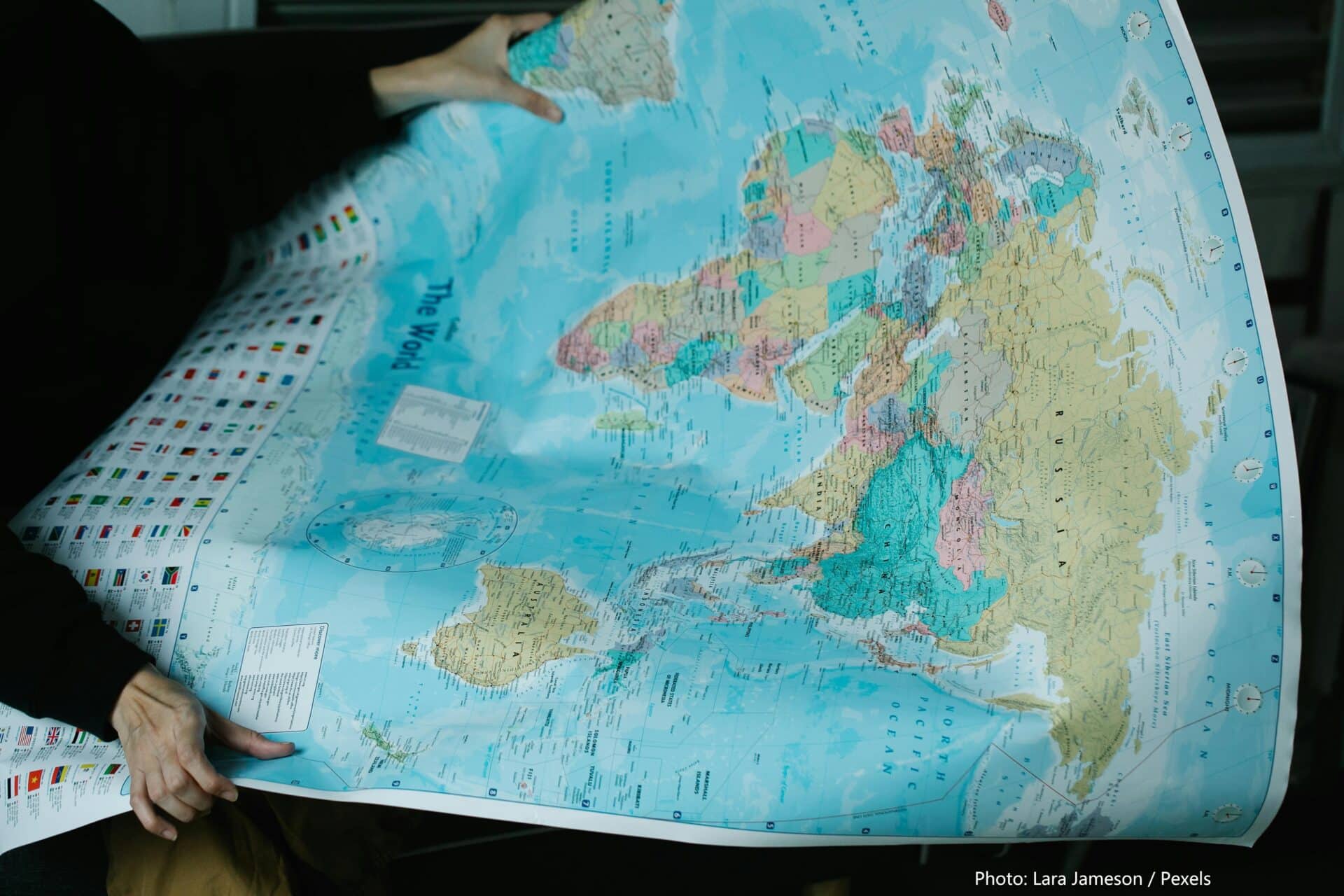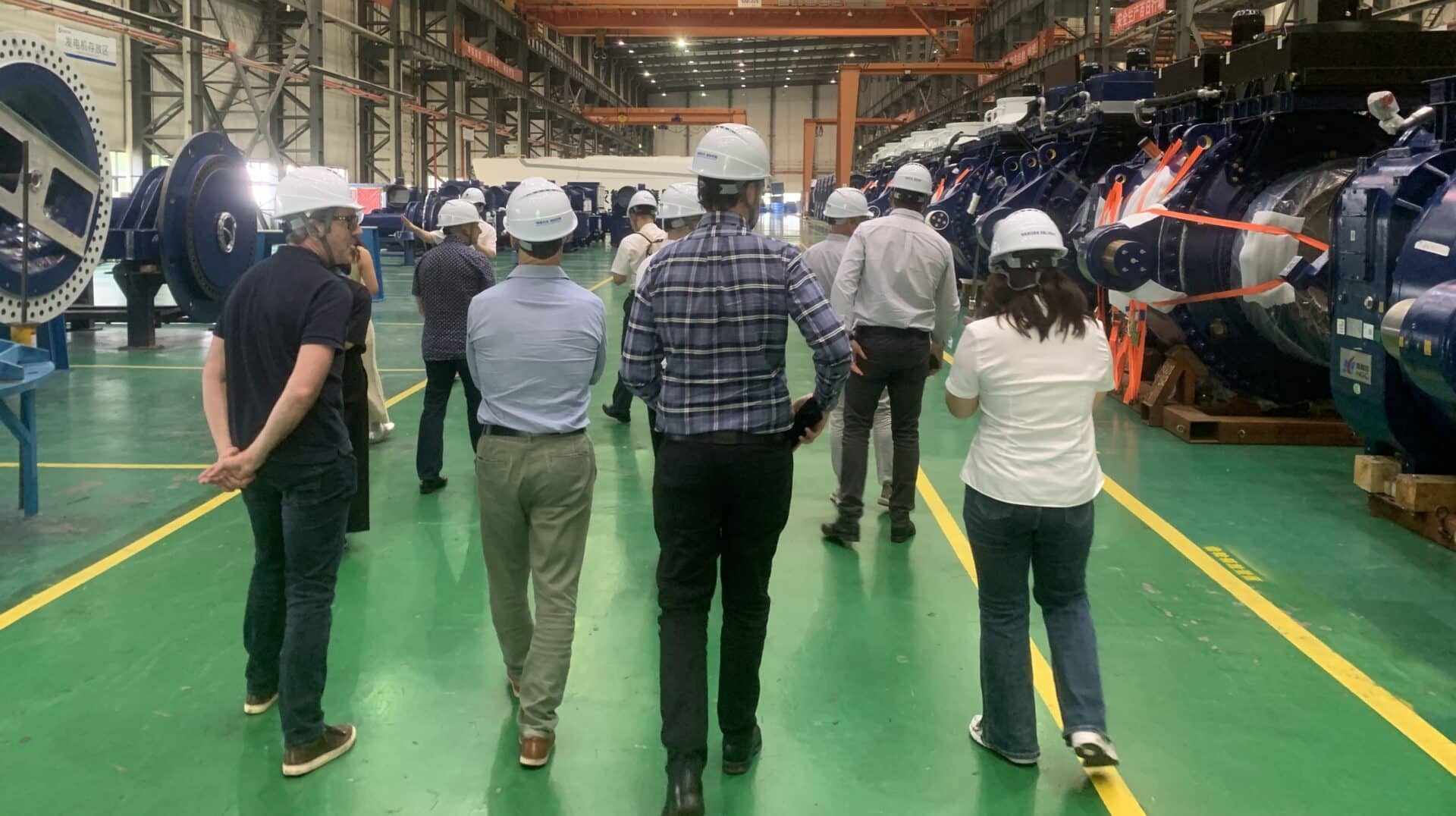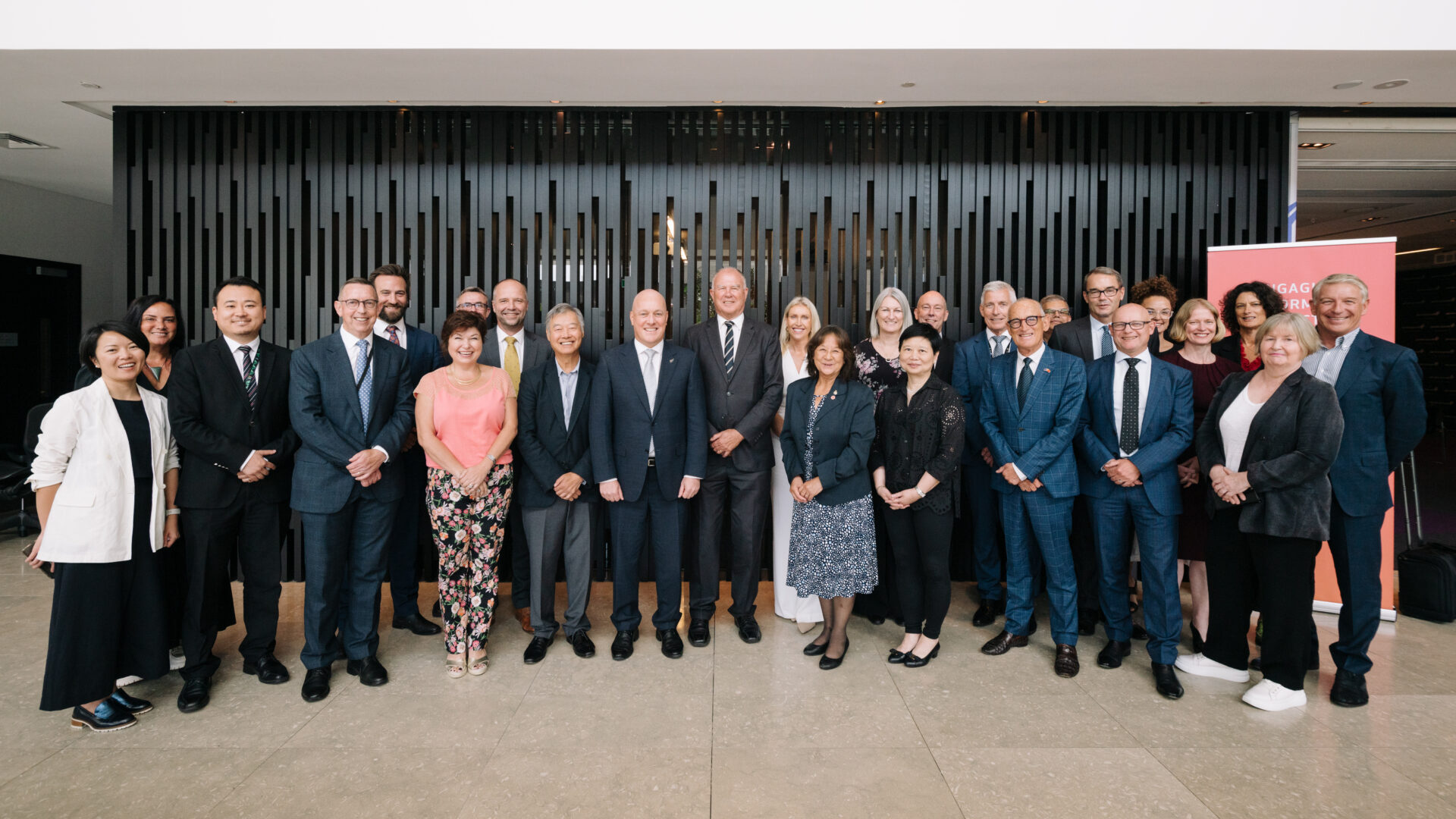Remarks To The International Symposium On Building A Free Trade Area Of The Asia Pacific And Promoting Global Economic Governance
SANYA, HAINAN, CHINA
15 AUGUST 2017
STEPHEN JACOBI
EXECUTIVE DIRECTOR, NZ CHINA COUNCIL, NZ INTERNATIONAL BUSINESS FORUM
ALTERNATE MEMBER, ABAC NEW ZEALAND
My thanks to China PECC and the organisers of this meeting for the opportunity to be with you and for the excellent arrangements that have been made for us.
I’m pleased to offer a business viewpoint on economic integration and global economic governance.
I do so from the perspective of three organisations I am associated with:
- the NZ China Council, which promotes the NZ/China relationship;
- the NZ International Business Forum, which promotes NZ’s integration in global markets;
- and the APEC Business Advisory Council (ABAC) which advises APEC Economic Leaders on the regional integration agenda.
The Free Trade Area of the Asia Pacific (FTAAP) was a business idea before it was adopted by APEC Leaders.
The idea was first coined in ABAC in 2004 and adopted by governments two years later.
It is also a source of dismay that some thirteen years later we are still talking about FTAAP as a long-term vision rather than an idea whose time has come.
This morning I’d like to offer a few thoughts about the how can move from vision to action as the theme of this session suggests.
I’d like firstly to take stock of the state of economic integration, then move on to consider whether the existing pathways to FTAAP might actually arrive at their destination, before considering what can be done at this point to bring FTAAP a good deal closer to reality.
Economic integration – how far have we come?
The English writer Charles Dickens began his work “A Tale of Two Cities” with the immortal phrase – “it was the best of times, it was the worst of times”.
We find something like this when considering the environment for regional economic integration today.
The worst of times refers to the threat of protectionism which never quite went away after the global financial crisis but which finds new currency in some parts – but by no means all – of the region.
Before I left New Zealand to come to Sanya, the Premier of the state of Queensland in Australia was openly threatening to set aside the non-discrimination rules of the CER Treaty between our two countries and favouring by a weighted preference of 30 percent local suppliers for government procurement.
“If the Australia-New Zealand Government Procurement Agreement gets in the way of that, we will go it alone”, the Premier is on record as stating.
It’s a small example – by no means restricted to the Western Island – but if it can happen in Queensland it can happen anywhere.
Certainly, the members of ABAC are committed to resisting protectionism in all its forms and regularly encourage APEC Economic Leaders to do the same.
But let’s not just see the glass as half empty – we are in the best of times because integration has continued to advance steadily, largely driven by business and the continuing evolution of global value chains.
The WTO tells us that merchandise trade has rebounded after a sluggish period, which is good news for us in business.
But the bigger picture here is that trade is changing.
Trade is not trade anymore.
Trade has been replaced by a set of much more complex economic interactions between firms and whole economies.
Professor Peter Petri and colleagues, in a report to ABAC in 2015, captured this well when he said:
“Businesses (today) engage in more varied activities, with a wider range of partners, and in more markets than ever. Major technological and economic trends are disrupting the business environment, including the emergence of global value chains, the digital/Internet revolution, the rise of a giant middle class, and dramatic improvements in connectivity.
Professor Petri sees this movement as “an Asia Pacific innovation”.
In our region the fact of the matter is that the market is moving faster than the regulatory system and has been doing so for some time.
The late lamented Trans Pacific Partnership (TPP) was one instrument for governments to play catch up.
That’s why TPP was styled as a “next generation” or “21st century” agreement.
TPP covered not just tariffs but non-tariff barriers, not just goods but services, not just trade but investment, not just border measures but behind the border measures, not simply regulatory harmonisation, but processes for regulatory coherence and convergence, not “one size fits all” but “one fit for all sizes”.
The Regional Comprehensive Economic Partnership (RCEP) was also a tilt in the same direction, although certainly not as ambitious as TPP, nor as we are discovering as comprehensive as its name suggests.
And we also have FTAAP which, as I said, has been around for some time and making excruciatingly slow progress.
In his address to the APEC CEO Summit in Lima last November President Xi Jinping described FTAAP as “a strategic choice concerning the long-term prosperity of the Asia-Pacific; We should steadfastly promote its construction and provide institutional guarantees for fostering an open regional economy”.
The conventional wisdom for some time has been that the means to achieve FTAAP lies in the so-called “pathways” – it’s a simple equation really TPP+RCEP+AP=FTAAP.
Let’s turn then to examine the state of those pathways in an environment where market-driven integration is already driving the way in which business is done in the region.
State of the pathways
I referred a moment ago to the “late lamented” TPP.
In fact, while I have no doubt about the lamentation, at least in business circles, that the Trump Administration caused when it announced US departure from TPP but it now appears that TPP’s demise was premature.
It is true of course that as things stand, TPP cannot enter into force without the United States.
This is because of the provision whereby a threshold of 85 percent of the GDP of the original twelve members must be met.
Latterly however the remaining eleven members have indicated a willingness to pursue their co-operation to see if TPP might yet see the light of day as a high quality, ambitious and comprehensive agreement.
A number of Ministerial and officials’ meetings have been held – the last meeting, held in Hakone, Japan, has been described as positive, with the parties aiming to reach consensus on a way forward by the time APEC Economic Leaders meeting in DaNang in November.
What is not clear at this point is whether any substantive changes to TPP are required beyond the entry into force provisions.
TPP took eight years to conclude and represented a finely constructed balance of provisions – re-opening the process is not attractive to the business community, which has already waited too long for the sort of environment TPP might put in place.
Meanwhile, in Asia, the Regional Comprehensive Economic Partnership (RCEP) continues to make progress – of sorts – between ASEAN and its six FTA partners.
I say ‘of sorts’ because once again progress – at least to a business observer – seems frustratingly slow with little prospect that the agreement will be in place by the end of the year.
This is certainly not for want of trying – 19 rounds of RCEP have been held with at least two more scheduled for this year and with a significant amount of engagement on the part of the business community.
The negotiation is characterized by different levels of ambition amongst the parties applying particularly to goods but also services and investment.
Some negotiating groups are only just getting started, suggesting there is still water to flow under the RCEP bridge before the negotiations can be brought to a conclusion.
On the other side of the Pacific the Pacific Alliance continues to deepen integration between its four existing members and in July decided to extend its membership to others including New Zealand, Australia, Singapore and Canada.
The significance of the Pacific Alliance should not be overlooked.
It already represents 221 million consumers equal to the world’s sixth largest economy.
It fulfils the objectives of being high quality, comprehensive and ambitious – what’s more it is now taking a step across the Pacific Ocean.
It may make faster progress than RCEP or even TPP(11) and is certainly one to watch.
Alongside these pathways – TPP, RCEP and PA – a number of other initiatives in the region are also underway.
New Zealand and China, for example, are upgrading our high-quality FTA, which entered into force in 2008.
An increasing number of countries are participating in China’s Belt and Road Initiative, which while not a trade negotiation, aims to improve connectivity and foster economic co-operation in the region and beyond.
While this progress is to be welcomed, how does it get us closer to FTAAP ?
Towards FTAAP
If that question is hard to answer, then perhaps we should look at the size of the opportunity.
We know that if it can be realized, FTAAP would be the largest and most diverse trade zone ever conceived.
Aggregate benefits are believed to range from $1.3 to $2.4 trillion per year by 2025 and show the region’s trade to grow by a conservative estimate of over 25%.
These are gains that simply cannot be left on the table.
We know too that FTAAP cannot simply be another trade negotiation – a super mega FTA.
The consensus required to launch such a negotiation has always been elusive and seems even further off today than it was in 2006.
The first A in FTAAP has always stood for “Area” rather than “Agreement” and advisedly so.
FTAAP has been a “top down” approach to liberalization with actual negotiations coming from “bottom up” through the pathways.
Conventional thinking has always been to see FTAAP as the way to realise the Bogor goals.
But given the imminence of the Bogor deadline in 2020, perhaps we should see FTAAP rather as being the next phase of Bogor, one characterized by greater commitment on the part of APEC members and greater structure and accountability.
ABAC has always said that FTAAP needs to characterized by three pillars – inclusiveness, comprehensiveness and transparency.
The formal launch of FTAAP (A for Area) by all APEC members would meet the inclusive criterion.
The adoption of a multi-year FTAAP work programme – already foreshadowed in the APEC Beijing Roadmap – would meet the comprehensiveness criterion.
Such a work programme would focus on the specific priorities to advance critical elements of the integration agenda and would draw on the negotiated outcomes of the pathways as they come to hand.
The last criterion – transparency – would be met by the structures put in place to manage the work-plan including a rigorous process of continuing self-review which is already an APEC habit.
Trade negotiators will doubtless question the serious intent of FTAAP conceived in this way.
Under the scenario just outlined negotiations happen in the pathways.
The FTAAP serves as a structure for casting vision, sharing ideas and banking outcomes which can assist the region on its path towards integration and shared governance.
Conclusion
The region has spent the last decade talking about FTAAP – now may be the time to do it.
FTAAP embodies the concept of an Area where free trade happens through a variety of pathways, each making progress at their own pace but with a means to ensure coherence between them.
As Bogor in the past has pointed us to a brighter future, so can FTAAP, as governments respond to the challenges set by business and market-based integration.
In these best and worst of times, moving to initiate FTAAP will signal to the world that the APEC region is serious about ensuring the benefits of integration are harnessed for the good of the region’s people.












 MENU
MENU
